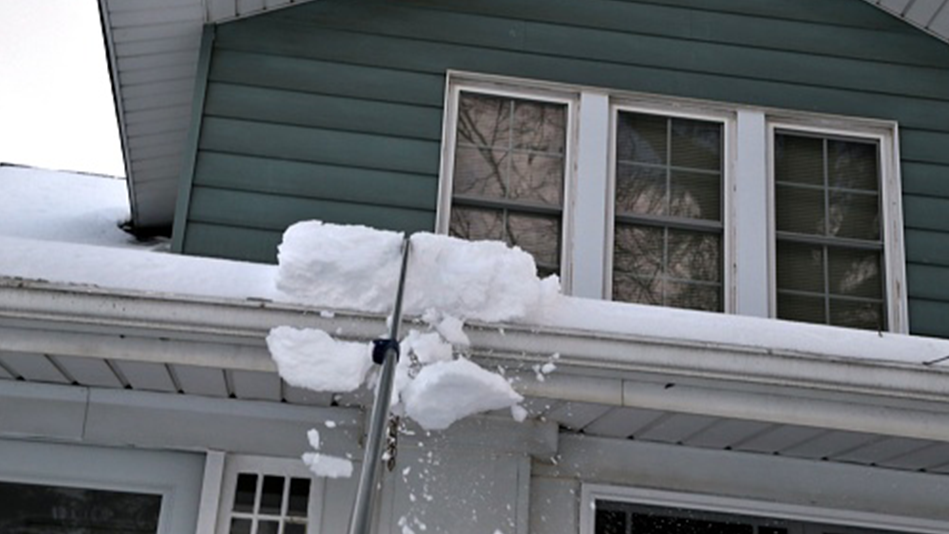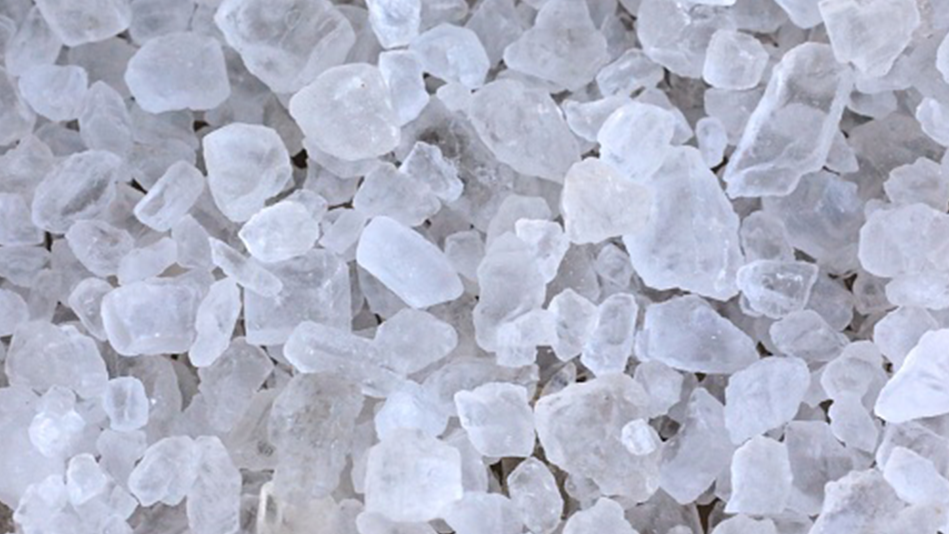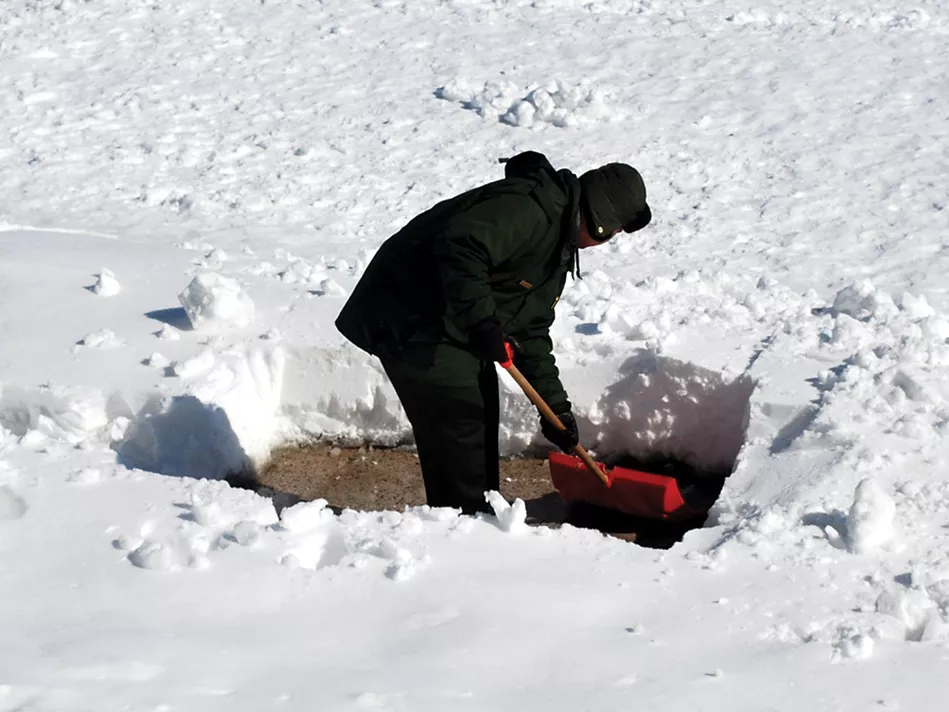While snow and ice look beautiful from inside your warm and cozy home, they can spell big trouble for homeowners if they’re allowed to accumulate. Be prepared for when your winter wonderland isn’t exactly wonderful with our tips to help make snow and ice removal easier.
Use winter tools the right way
When it comes to snow removal, homeowners have two main winter tools to choose from: Snow shovels or snowblowers. Though there are only two main categories, the tricky part is finding the right ones for your weather, your yard, and your back! Since most are powered by human strength, it’s important to also use the following tips for safe shoveling:
- Warm up your muscles before any shoveling sessions to prevent snow shoveling injuries
- Use a shovel that allows your head, neck, and spine to stay aligned as much as possible
- Push the snow instead of lifting it, and avoid excessive twisting
- Move snow in smaller loads instead of heavy shovelfuls
- Take as many breaks as you need – shoveling snow is a workout!
Pro Tip: If you have a large area to shovel, or if you have any neck, spine, back or knee injuries, getting a snowblower may be a better choice.
Stop pipe leaks before they start – clear snow from your home’s perimeter
Snow that accumulates next to your home can cause frozen pipes, or worse yet lead to pipe damage in the form of cracks and leaks, which can hurt your home’s foundation.
Avoid the need for home foundation repair by removing snow around your home to keep it from accumulating. This helps prevent the soil and foundation from shifting and cracking as snow and ice continue to freeze and thaw over winter.

Reduce the risk of snow damage to your roof
From roof leaks to ice dams, ice and snow damage can cause big problems if they’re allowed to build up at your home, adding unneeded stress to your roof and gutters. Since getting on the roof is unsafe during freezing temperatures, we recommend inspecting your roof ahead of winter. Also remove any icicles as they appear, and use a deicing agent if ice starts to accumulate.
How to remove snow from your roof safely
Use a retractable roof rake to remove snow from your roof. Always pull the snow toward you (instead of side-to-side) to prevent shingle damage and be sure to watch out for falling snow or ice!
For stubborn ice buildup, create a channel where melted ice and snow can flow — but be careful not to damage the structures beneath the ice with any tools. When finished, sprinkle a deicing agent in your gutters to slowly melt the ice and allow your gutters to drain.
Pro Tip: Clean your gutters before the first snowfall to help with ice prevention. You can also apply a deicing agent to your gutters or safely install a heated gutter cable to help your snow and ice problems melt away.

Choose the Right Ice Melt or Deicing Agent
Rock salt is often the tried-and-true method of snow and ice removal for homeowners. But did you know it can seriously damage your concrete and asphalt, not to mention any exposed plants? Explore the following guide to deicing agents to find out what will work best for you.
Calcium chloride is most effective at lower temperatures, it is one of the fastest ice melts around, and one of the least expensive – plus it’s safe to use on concrete.
Liquid sodium chloride uses much less salt (making it better for the environment), and it’s less expensive than rock salt. It works best when used a few hours before snowfall because it prevents snow from sticking, but it also works great for snow and ice removal.
Magnesium chloride works more slowly than other ice-melting products, but it’s also less corrosive to concrete and asphalt as those mentioned previously.
Potassium chloride and urea work fairly well in higher temperatures (25 degrees and warmer), but with so many cheaper and better options available, you may be better off choosing one of the previous deicing agents for your home.
Sodium chloride (aka rock salt) is great in a pinch! The highly popular and least expensive option, it is less effective at extremely low temperatures, corrosive on metals and concrete, and could kill your plants if allowed to accumulate.
Sodium Acetate: One of the more environmentally friendly options, this deicing agent lasts longer than other ice melts, though it’s usually more expensive.
While snow covers the ground, make sure your home’s major systems and appliances are covered — check out our coverage guide or call 866.311.5712 for more information today.
What's your favorite deicing agent? Visit us on Facebook or Instagram to tell us your thoughts!

